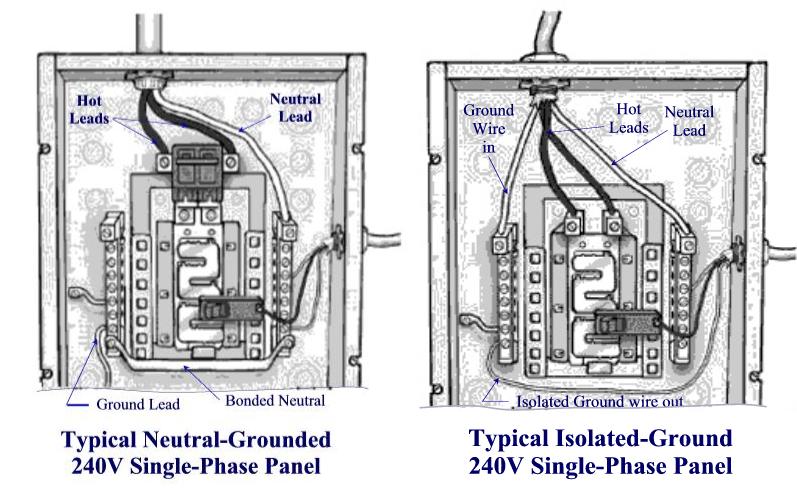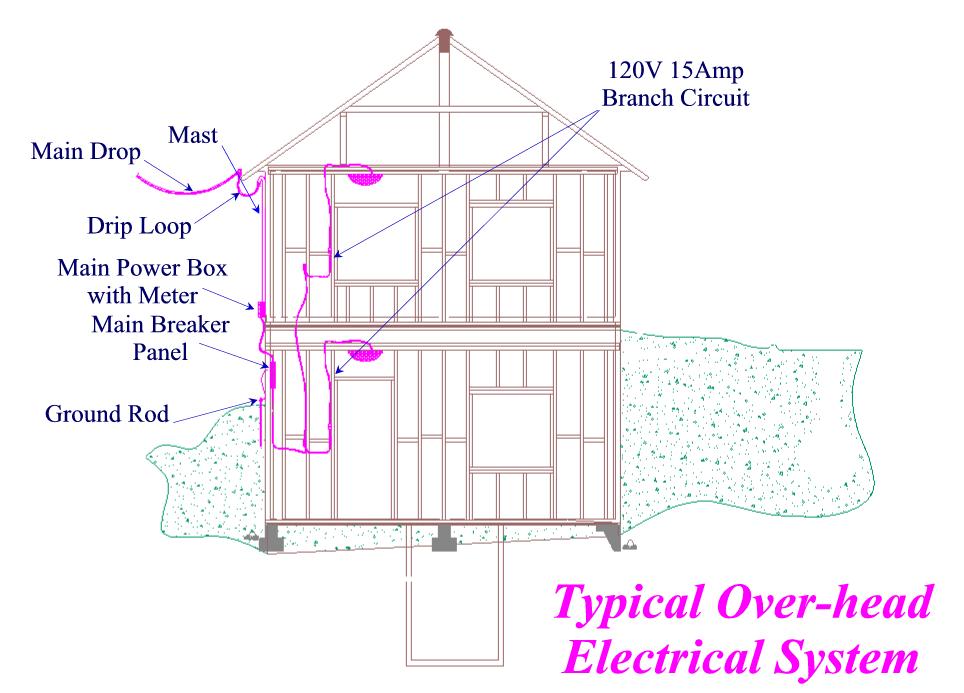 Now
that you have a general understanding of the key structural components of
a home, lets now work on understanding the mechanical elements of a home.
Now
that you have a general understanding of the key structural components of
a home, lets now work on understanding the mechanical elements of a home.
We will start with the most dangerous and critical component of the home and that's the electrical system.
Without an electrical system in today's modern home, nothing would work. The kids (and dad) couldn't watch TV, our teenagers couldn't listen to their stereos, you wouldn't have a heater to keep the house warn in winter nor would you have an air conditioner the keep the house cool in summer and most of all, we would spend most of our day in-the-dark (no pun intended).
But, although the electrical system is a must in today's homes, it is also the most lethal of the mechanical systems in the home. It's can't be seen, you can't smell it until it's to late and it doesn't give you a warning before it strikes.
 More
homes are destroyed by electrical fires (malfunctions) than from any other
system in the home and therefore, extreme caution is a must when reviewing
this system in the home. Likewise, when purchasing, building or remodeling
a home, special attention should be placed on the condition, design and adequacy
of the electrical system and it's branch circuits.
More
homes are destroyed by electrical fires (malfunctions) than from any other
system in the home and therefore, extreme caution is a must when reviewing
this system in the home. Likewise, when purchasing, building or remodeling
a home, special attention should be placed on the condition, design and adequacy
of the electrical system and it's branch circuits.
Enough
preaching...Lets start with the principles of the system.
Electricity is supplied by a local utility company and a small portion is split off to your home. With today's normal family demands, 200 Amps is common for most homes.
The
power is the wired into a sub-panel like the one shown to the right.
Normally the panel is located someplace inside the home. From the panel
box, the power is then split into small amperes segments called branches
and routed to various rooms and appliances in the home. Some appliances
require more power to operate such as an electric dryer, electric stove
and oven, electrical furnace or air conditioner. Such components are given
the full power dosage (240V at 35 to 50 amp) while the balance of
the homes components (wall outlets and lights) are given divided portions
(120V at 15 to 20 amp).
The photo to the right illustrates a simple over-head power line drop with a single branch circuit to lights, switches and a couple of out lets. Typically in most home of today, you'll find 10 to 20 plus breakers in the main panel. Each breaker feeds a single branch circuit. (Click on the photo to get an enlarged view.)-->>
There is no possible way that I could make an electrician out of you within one page, so I'll just suggest that you have an expert-licensed electrician or home inspector review the system to make sure your family is safe and that all of the systems are in proper working order.